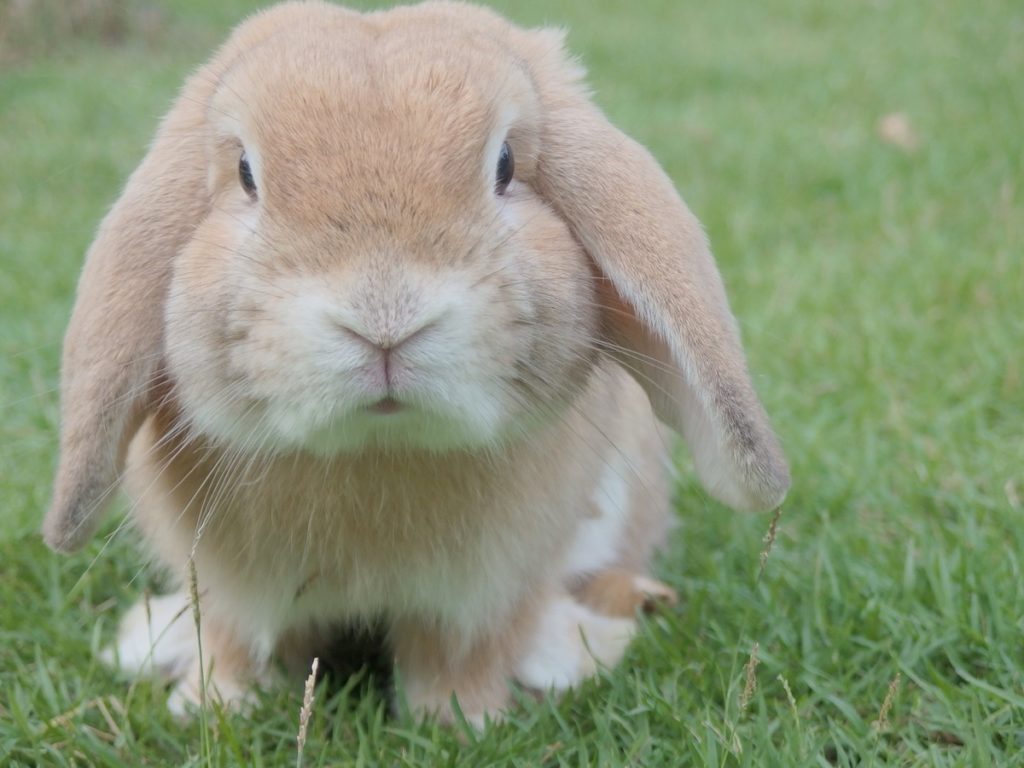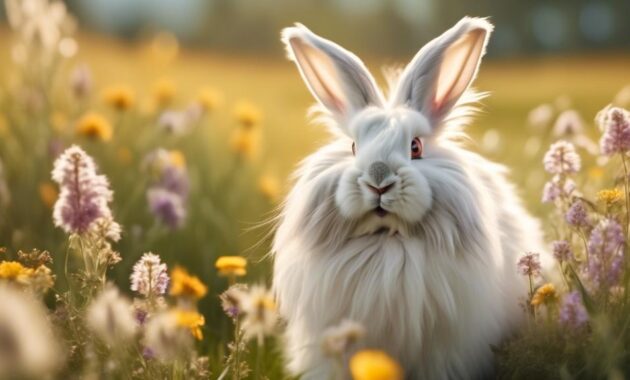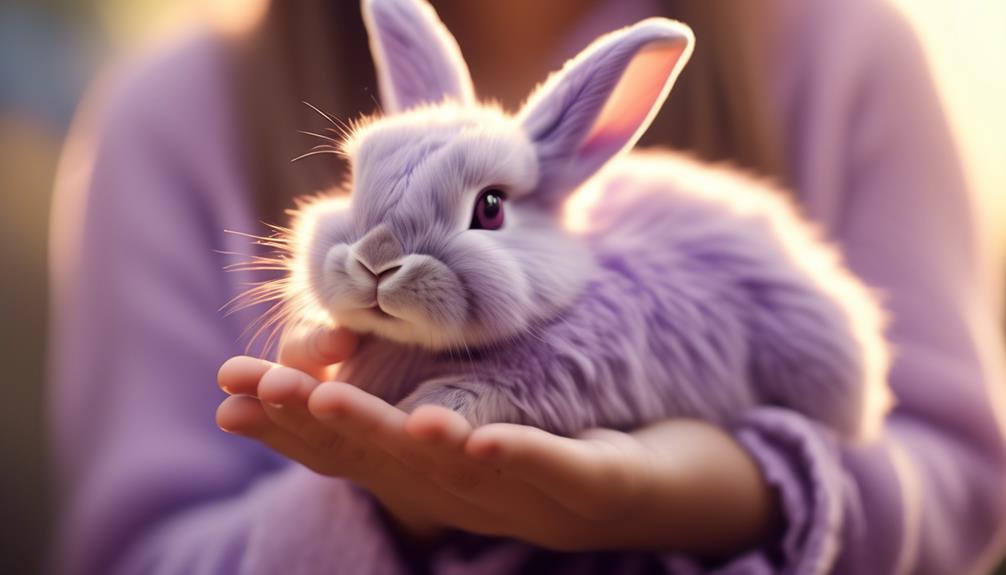
Are you tired of searching for the perfect companion, only to be disappointed time and time again?
Well, look no further because the Lilac Rabbit is here to save the day! With its irresistible charm and adorable lilac-colored fur, this little creature is guaranteed to steal your heart.
But the Lilac Rabbit is not just a pretty face, it has so much more to offer. So, what makes it the perfect companion for all? Keep reading to find out.
Key Takeaways
- Lilac Rabbits are a compact breed with a soft and short fur coat in a beautiful lilac/lavender color.
- They are best suited for singles, seniors, families with children, and first-time rabbit owners.
- Lilac Rabbits require a fairly large enclosure, whether indoors or outdoors, with specific requirements for each.
- Their diet should consist of 70% good-quality hay, fresh vegetables, and limited amounts of pellets, with regular checks for ear mites and minimal grooming needed.
Description and Characteristics
What are the key characteristics that make the Lilac Rabbit the perfect companion?
Well, let’s start with its description. The Lilac Rabbit weighs around 6-8 pounds and has a compact body shape. Its moderately upright and short ears measure about 3.5-4 inches long. The rabbit’s fur is soft and short, while its coat color is a beautiful lilac/lavender shade, appearing more purple or gray depending on the light. According to ARBA standards, the Lilac Rabbit should have an even pinky shade of dove color throughout its body.
In terms of origin, this breed first appeared in various places around the world in the early 1900s and was exhibited by H. Onslow in 1913.
Suitable for all kinds of owners and living arrangements, the Lilac Rabbit requires a fairly large enclosure, whether indoor or outdoor. Its diet consists of 70% good-quality hay, and minimal grooming is needed compared to wooly breeds.
Breed History/Origin
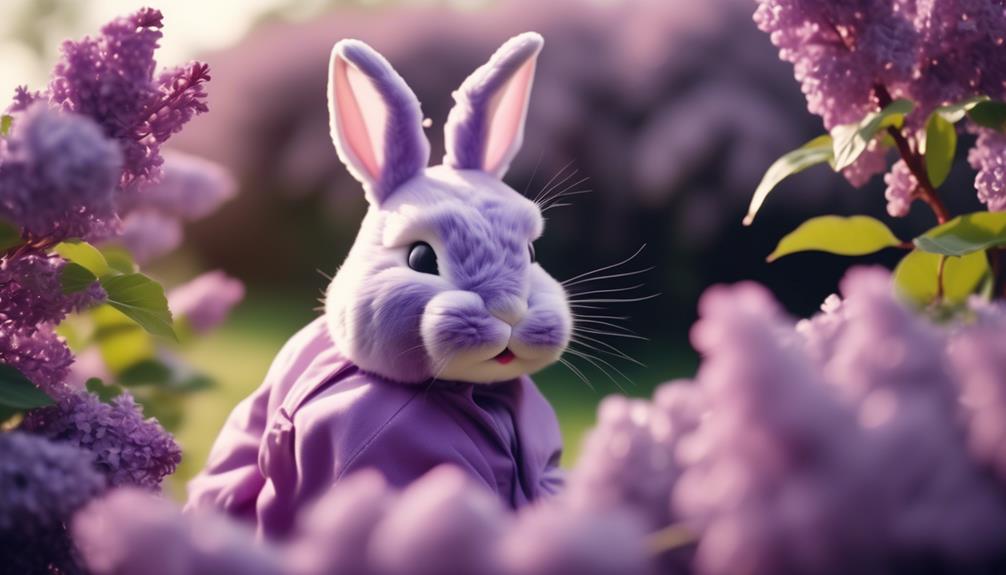
The Lilac Rabbit breed originated in various places around the world in the early 1900s. It was first exhibited by H. Onslow in 1913. Around the same time, Mabel Illingworth also produced Lilac-colored rabbits.
In 1917, C.H. Spruty of Holland crossed Blue Beverens with Havanas to create a similar Lilac rabbit. The first imports of Lilac rabbits were received by the U.S. and Canada around 1926.
Today, the Lilac Rabbit is known for its compact body shape, moderately upright and short ears, and soft, short fur. Its coat color is a beautiful lilac or lavender shade, appearing more purple or gray depending on the light.
The Lilac Rabbit has become a popular breed among singles, seniors, families with children, and first-time owners due to its friendly and adaptable nature.
Suitable Owners and Living Arrangements
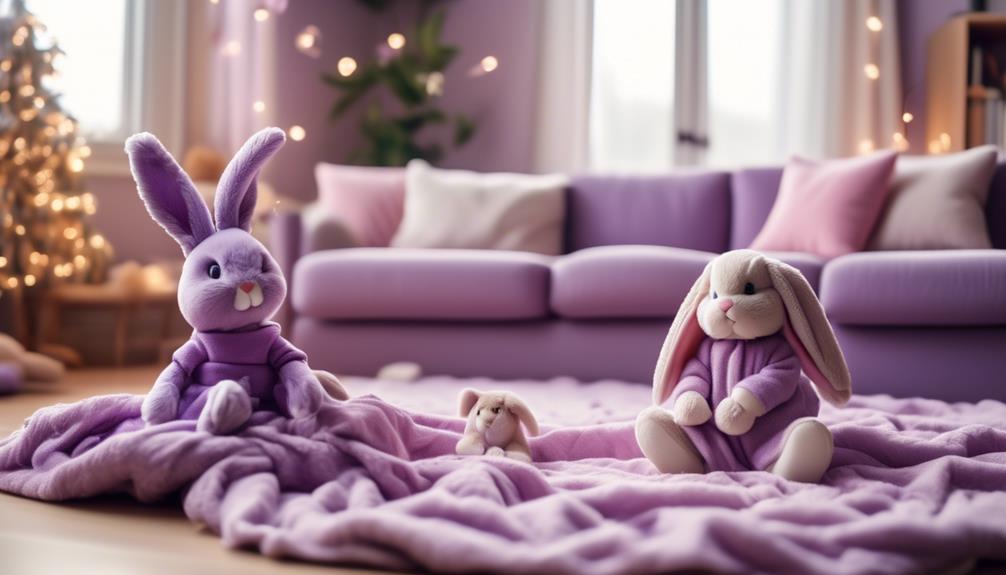
If you’re considering bringing a Lilac Rabbit into your home, it’s important to understand the suitable owners and living arrangements for this charming breed. Here are three key factors to consider:
- Best suited for: Singles, Seniors, Apartment/House Rabbits, Families with children, First-time owners, Outdoor/Indoor Rabbits
- Require a fairly large enclosure
- Outdoor enclosures should be raised from the ground and have a fenced bottom
- Indoor enclosures should have a wire frame on the sides and a plastic bottom
Lilac Rabbits can adapt well to different living situations, making them a versatile choice for a variety of owners. Whether you live alone, have children, or are a senior looking for a companion, a Lilac Rabbit can be a perfect fit.
They can thrive in both outdoor and indoor environments, but it’s important to provide them with a spacious enclosure that meets their needs. Outdoor enclosures should be secure and elevated, while indoor enclosures should have proper ventilation and a secure bottom to prevent any escapes.
With the right living arrangements, a Lilac Rabbit can bring joy and companionship to any home.
Care Requirements
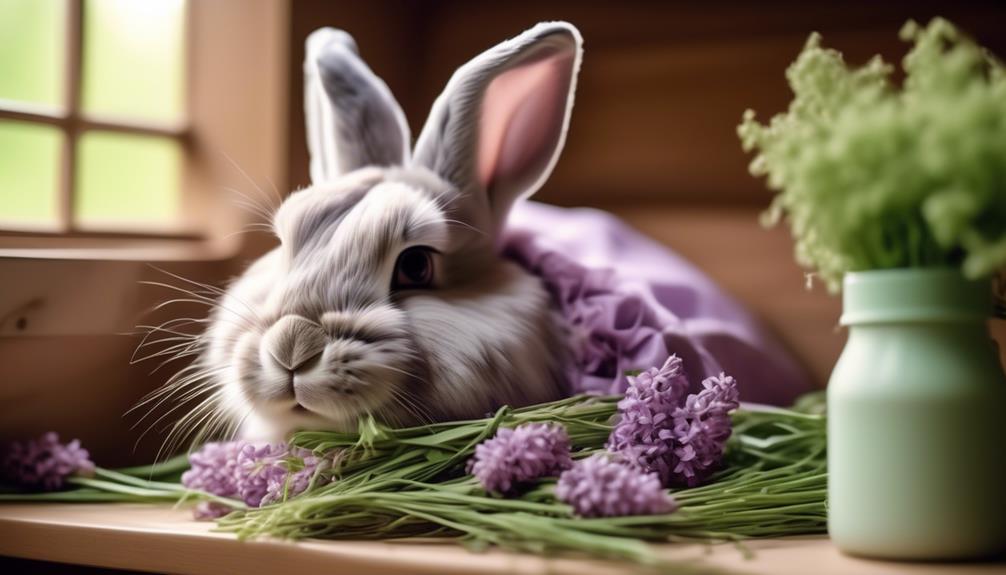
To properly care for a Lilac Rabbit, it is important to understand their specific care requirements. Here are some key aspects to consider:
| Care Requirements | Details |
|---|---|
| Diet | 70% good-quality hay should make up the majority of their diet. |
| Grooming | They require minimal grooming compared to wooly breeds. |
| Ear Health | Periodically check their ears for any signs of ear mites. |
| Living Arrangements | Provide a fairly large enclosure for them to live comfortably. |
| Outdoor Enclosures | Outdoor enclosures should be raised from the ground and have a fenced bottom. |
| Indoor Enclosures | Indoor enclosures should have a wire frame on the sides and a plastic bottom. |
Diet and Nutrition
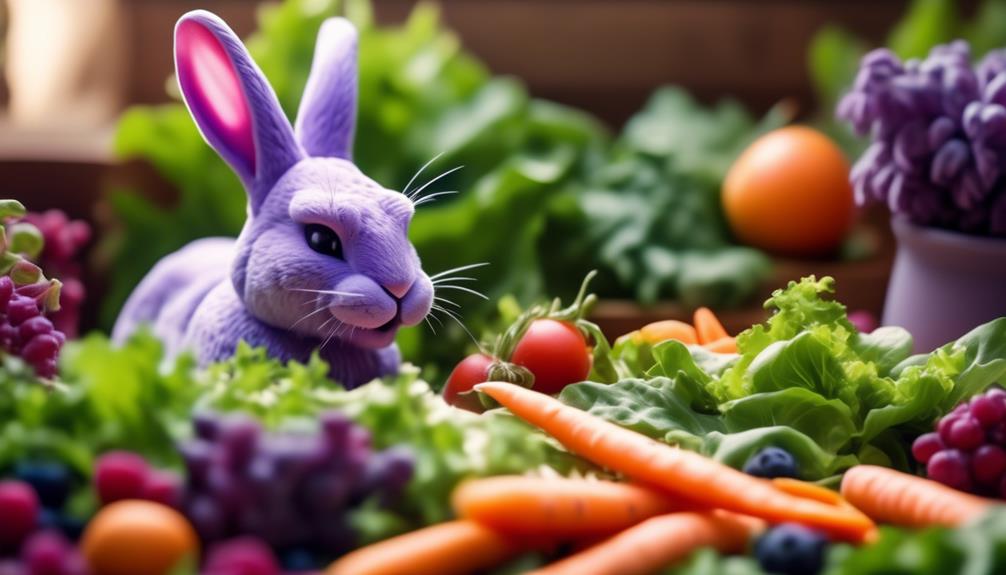
For optimal health and well-being, ensuring a proper diet and nutrition is essential for your Lilac Rabbit. Here are three important aspects to consider:
- Hay: Make sure that 70% of your Lilac Rabbit’s diet consists of good-quality hay. Hay is crucial for their digestive health and helps wear down their teeth, which continuously grow.
- Fresh Vegetables: Provide your Lilac Rabbit with a variety of fresh vegetables, such as leafy greens, carrots, and bell peppers. These vegetables are rich in vitamins and minerals that support their overall health.
- Limited Pellets: While pellets can be a part of your Lilac Rabbit’s diet, they should be offered in limited amounts. Too many pellets can lead to obesity and other health issues. Consult with your veterinarian for the appropriate serving size.
Grooming Tips
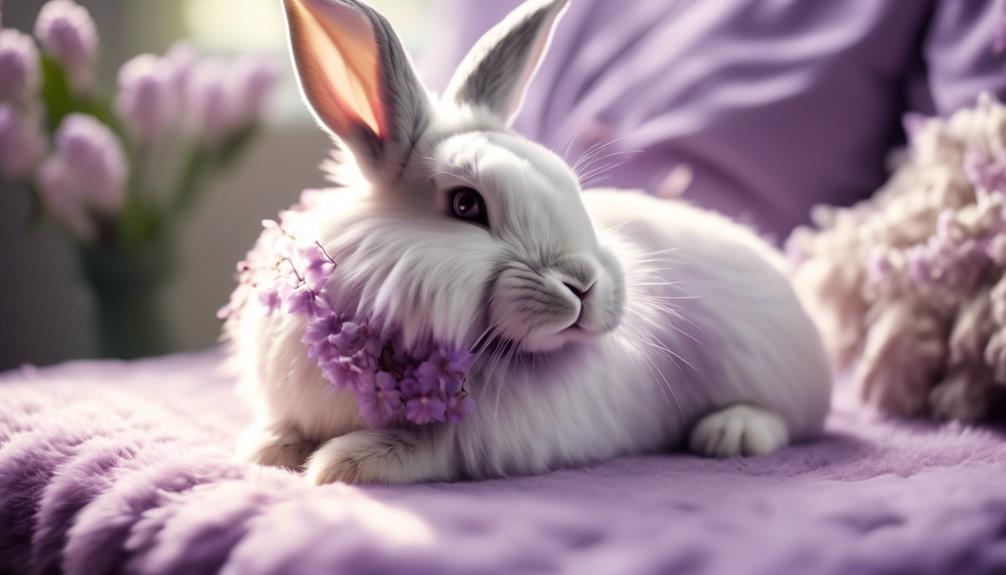
Maintaining the health and appearance of your Lilac Rabbit is crucial, and proper grooming is an important aspect of their care.
While Lilac Rabbits require minimal grooming compared to wooly breeds, there are still a few things you can do to keep them looking their best.
Regularly brush their fur using a soft-bristled brush to remove any loose hairs and prevent mats from forming.
Pay special attention to their hindquarters, as this area is prone to getting dirty. If necessary, gently clean their fur using a damp cloth or pet-safe wipes.
It’s also important to periodically check their ears for any sign of ear mites and clean them if needed.
Health and Wellness
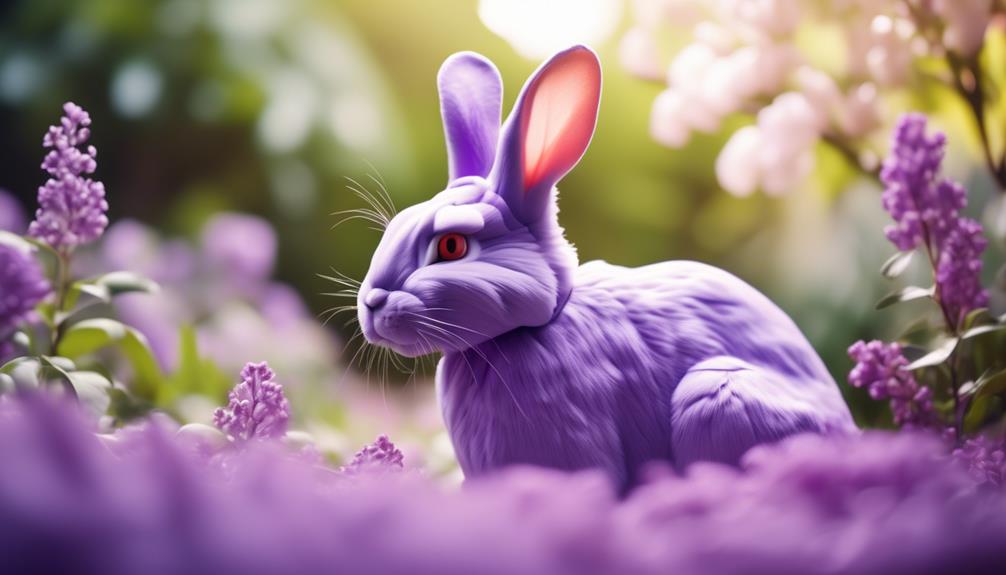
Taking care of your Lilac Rabbit’s health and wellness is essential to ensure their overall well-being. Here are three important tips to keep your furry friend in good shape:
- Regular Veterinary Check-ups: Just like any other pet, your Lilac Rabbit needs regular visits to the veterinarian for check-ups and vaccinations. A qualified vet will be able to assess their health, identify any potential issues, and provide necessary treatments or preventive measures.
- Balanced Diet: Providing your Lilac Rabbit with a balanced diet is crucial for their health. Make sure to offer them a variety of fresh hay, high-quality pellets, and fresh vegetables. Avoid feeding them sugary or processed foods, as these can lead to digestive problems and obesity.
- Exercise and Mental Stimulation: Encourage your Lilac Rabbit to stay active and mentally stimulated. Provide them with plenty of toys, tunnels, and safe chewing items to keep them entertained. Also, make sure they’ve enough space to hop and play around. Regular exercise helps maintain their physical health and prevents boredom.
Training and Socialization
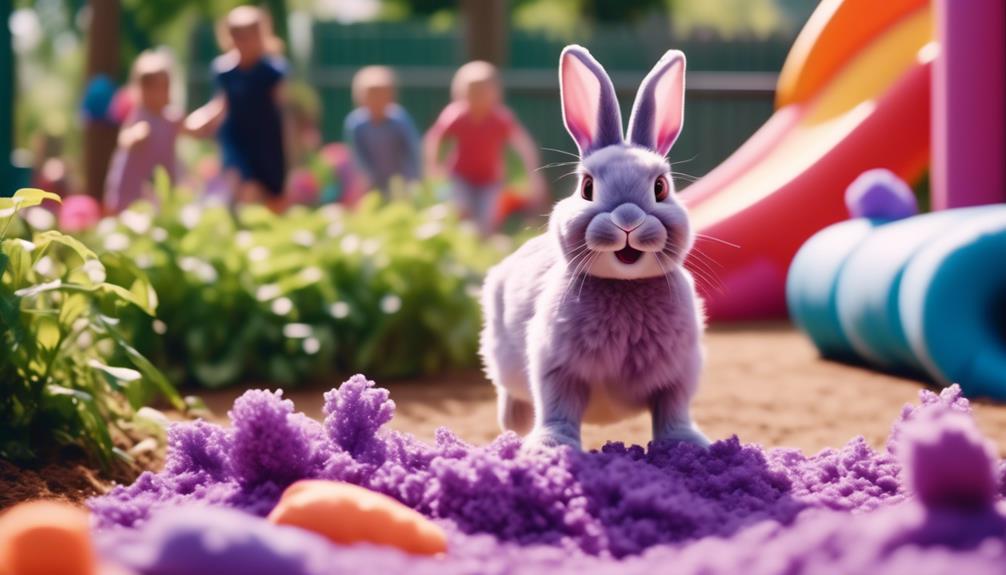
To ensure your Lilac Rabbit becomes a well-behaved and social companion, it is important to focus on training and socialization from an early age. Training your rabbit will help establish good behavior and prevent any unwanted habits. Socialization, on the other hand, will help your rabbit become comfortable around people and other animals. Here are some key aspects to consider when training and socializing your Lilac Rabbit:
| Aspect | Training Tips | Socialization Tips |
|---|---|---|
| Litter Training | Use a litter box and reward your rabbit with treats and praise when they use it correctly. | Allow your rabbit to interact with different people and animals in a controlled and supervised environment. |
| Handling | Gradually introduce your rabbit to being held, starting with short sessions and providing positive experiences. | Encourage gentle handling by different family members and friends to help your rabbit feel comfortable. |
| Obedience Training | Teach basic commands like “come” and “stay” using positive reinforcement techniques such as treats and praise. | Expose your rabbit to new environments, sounds, and experiences to build their confidence and adaptability. |
Remember to be patient and consistent with your training efforts. By investing time and effort into training and socialization, you can ensure that your Lilac Rabbit grows up to be a well-rounded and friendly companion.
Comparable Breeds
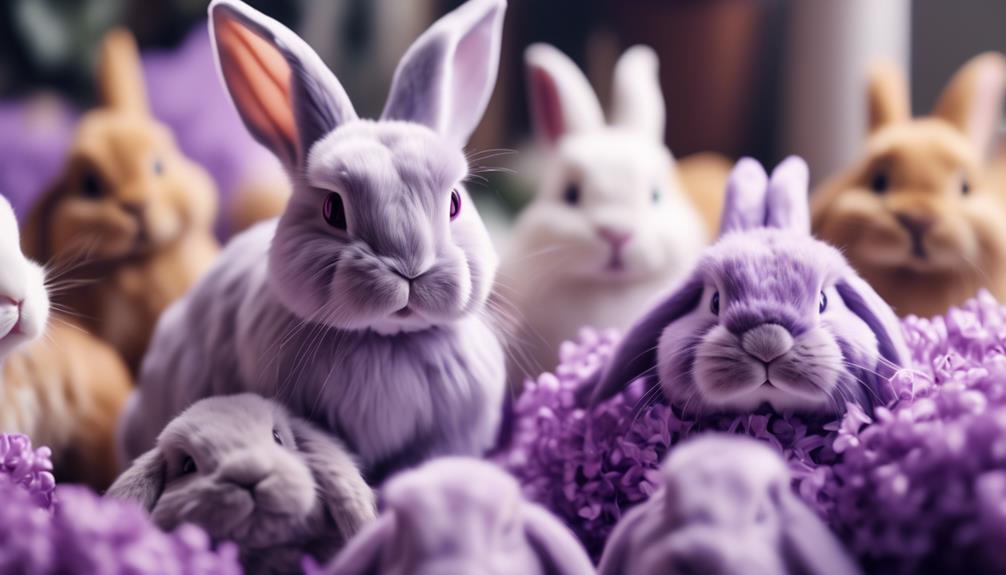
When comparing breeds, the Lilac Rabbit can be closely compared to the Havana Rabbit and the Beveren Rabbit. These breeds share certain similarities in terms of appearance and characteristics.
- Havana Rabbit: Just like the Lilac Rabbit, the Havana Rabbit has a compact body shape and moderately upright ears. They both have short, soft fur and come in a variety of colors, including lilac/lavender.
- Beveren Rabbit: The Beveren Rabbit also shares some similarities with the Lilac Rabbit. Both breeds have a similar body shape and fur texture. They both come in a range of colors, including lilac.
- Temperament: The Lilac Rabbit, Havana Rabbit, and Beveren Rabbit are all known for their friendly and sociable nature. They make great companions and are suitable for families and individuals alike.
Frequently Asked Questions
Are Lilac Rabbits Good With Other Pets?
Yes, lilac rabbits can be good with other pets. They have a friendly and sociable nature, making them adaptable to living with other animals as long as proper introductions and supervision are done.
How Often Should I Clean the Indoor Enclosure for a Lilac Rabbit?
You should clean the indoor enclosure for your Lilac Rabbit regularly to maintain a clean and healthy living space. Frequency may vary, but aim for at least once a week to ensure a fresh environment.
Can Lilac Rabbits Be Litter Trained?
Yes, Lilac rabbits can be litter trained. Start by placing a litter box in their enclosure and consistently placing their droppings in it. With time and positive reinforcement, they will learn to use it.
Do Lilac Rabbits Require Any Special Vaccinations?
No, lilac rabbits do not require any special vaccinations. Just make sure to provide them with a balanced diet, regular grooming, and check their ears for mites. They’ll be happy and healthy companions!
What Is the Average Cost of a Lilac Rabbit?
The average cost of a lilac rabbit can vary depending on factors such as location and breeder. It’s best to research and compare prices from different sources to find the best deal.
Can Lionhead Rabbits Be a Good Companion Like Lilac Rabbits?
Yes, adorable lionhead rabbits can be wonderful companions just like lilac rabbits. With their friendly and sociable nature, lionhead rabbits can make great pets for both children and adults. Their fluffy mane and affectionate behavior make them a delightful addition to any family.
Conclusion
So if you’re in search of the perfect companion, look no further than the Lilac Rabbit. With its compact body shape, soft fur, and friendly nature, this lilac-colored beauty is sure to capture your heart.
Whether you’re single, a senior, or have a family with children, the Lilac Rabbit is an ideal pet for all.
Don’t wait any longer, discover the joys of owning a Lilac Rabbit today and experience a lifetime of love and companionship.

